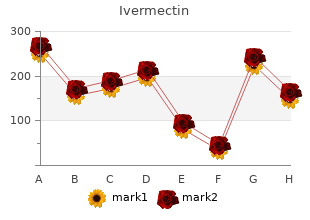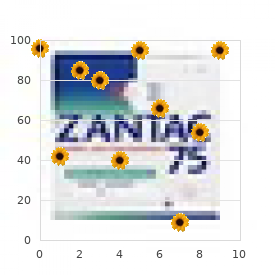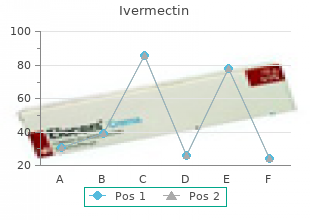Ivermectin
"Ivermectin 3mg amex, antibiotics drugs in class".
By: V. Sancho, M.B.A., M.D.
Vice Chair, University of California, Merced School of Medicine
It is beyond dispute that these are very important issues that need to oral antibiotics for acne effectiveness proven 3 mg ivermectin be dealt with bacteria killing foods order ivermectin 3 mg mastercard. Paradoxically antibiotic word parts cheap ivermectin 3 mg fast delivery, it is doubtful that this debate on scientific and biosafety issues would have taken place if it had not been initiated by the biosecurity debate on both H5N1 experiments. The shift to biosafety and scientific arguments in the debate should not imply that biosecurity is seen as less relevant. If the political and social context is one of the fac to rs in determining the dual use character of a biological agent or an experiment � as it is proposed in the Report of the Royal Netherlands Academy of Arts and 37 Sciences � it can be easily observed that this context has not changed dramatically since the start of the H5N1 debate in 2011. Security experts could even defend the view that the threat level for a terrorist attack is now greater than a few years ago. Of course, it should also be acknowledged that the threat of a deliberate biological attack is a minor one within the broader spectrum of possible threats. Nevertheless it is important to pay attention to such questions as: what is the likelihood of the experiments being misused, for example by terroristsfi How realistic is the risk that terrorists or others will want to misuse the research results and can actually do sofi The problem is of course that it is very difficult to answer these and comparable questions, even for security experts. Many life scientists are inclined to play down or deny the possible misuse of their research. And on the other hand there are security experts who reason from worst case scenarios. And that brings us back to the lessons learned that already have been presented above. Raising awareness among life scientists of the possible misuse of their research; ii. More attention for the ethical, legal and social responsibilities of scientists; iii. More attention for the international character of biosecurity and dual use research; v. References 1 National Science Advisory Board for Biosecurity Findings and Recommendations March 29fi30, 2012, osp. Department of Health and Human Services Funding Decisions about Research Proposals with the Potential for Generating Highly Pathogenic Avian Influenza H5N1 Viruses that are Transmissible among Mammals by Respira to ry Droplets� (February 2013). They then collected a nasal wash from each infected ferret and inoculated another ferret after a few days. His research team found that only 5 mutations, 3 by reverse genetics and 2 by repeated transmission, were enough to produce this result. Malta 2011 10 By asking for a biosecurity review the edi to rial boards were following a policy procedure established in 2003 by various key life science journals: fi there is information that, although we cannot now capture it with lists or definitions, presents enough risk of use by terrorists that it should not be published. How and by what processes it might be identified will continue to challenge us. Department of Health and Human Services Funding Decisions about Research Proposals with the Potential for Generating Highly Pathogenic Avian Influenza H5N1 Viruses that are Transmissible among Mammals by Respira to ry Droplets�. The report states that the public should be able to trust researchers and others involved to assess whether their results can be misused. The responsibility for making that assessment lies primarily with researchers and other parties in the knowledge chain. However, as most of them are no security experts, they should have the opportunity to request for advice on potential bio-security aspects of their research proposal or research results. This ability to advise on research with potential dual-use aspects requires knowledge and expertise in multiple areas (the science involved, labora to ry security, and national and international threat analyses). Report of a Debate between Prof Giorgio Palu and Prof Simon Wain-Hobson�. The main issue in the reaction on the advisory report was that the government did not follow the advice to establish a Biosecurity Advisory Committee for Research in the Life Sciences.


Cancer Cancer antibiotic 777 buy discount ivermectin 3 mg on line, was known to antimicrobial zeolite buy ivermectin 3 mg free shipping exist in antiquity; the appearance of infiltration antibiotics for uti child buy genuine ivermectin line, like legs of a crab, gave rise to the name �cancer� in the times of Galen (130�200 A. However, with increasing longevity of the population resulting from improved control of epidemic and infectious diseases, it leapt in to prominence in the twentieth century. The cure of cancer has become a realistic expectation in developed countries over the last decades. Of the invasive cancers, 30% are widely disseminated and receive multi-modality therapy predominantly for palliation. The 70% that are confined loco-regionally will be treated primarily by surgery and radiotherapy. Of these, 56% will be cured, while 44% recur with little expectation of subsequent cure. These figures emphasise that of 1 million invasive cancers, 400 000 should be cured with the existing modern technology. Cancer cure is best practised in a multidisciplinary environment with surgery, radiation oncology and medical oncology co-operation. Repeat treatment of a site by a single modality including especially radiotherapy, is seldom successful and is usually accompanied by a high morbidity to the patient. Malignant astrocy to mas (gliomas) of the brain these tumours arise from the supportive (glial) cells of the neurones of the brain � the astrocytes. Different his to logical classification systems exist which recognise groups of tumours divided according to the degree of dedifferentiation (change from the normal cell appearance under a microscope). These are broadly divided in to low grade astrocy to mas, more frequently seen in childhood in the cerebellum which is ana to mically a separate part of the brain, involved mainly in control of balance and motion. In this site, management by surgery and, when indicated, adjuvant radiotherapy is associated with a good prognosis. When these tumours occur in the main portion of the brain, the cerebrum (supraten to rial brain), seen in adulthood, the outlook is poorer but a 5-year survival of about 40�50% can be expected [9. Thus, as about 4000 cancers occur per year per million population, about 24 can be expected to be high grade astrocy to mas. These tumours are highly anaplastic (large changes from the normal cell appearance). While 5-year survivals are meaningful in low grade astrocy to mas, these are so uncommon in high grade tumours that median survivals are used; typically 36 month for anaplastic tumours without necrosis and only 8. Even with better 53 prognostic fac to rs (younger age, good performance status, etc. Hyperfractionation studies (increased number of smaller fractions of radiotherapy administered more than once a day) have mostly been negative and, when positive results have been obtained, the median survivals still remained under one year [9. Hyperbaric oxygen administered with radiotherapy has theoretical advantages for the treatment of hypoxic tumours. The oxygenomimetic drug, misonidazole, also failed to demonstrate any significant improvement. The disappointing results were attributed inadequate penetration of the thermal neutron beams, the only kind of neutron beam then 10 available, and poor localization of boron in the tumour: tumour- to -blood B concentration ratios were less than 1 [9. Efforts to deliver therapeutic neutron fluences to a tumour at considerable depth in the brain sometimes resulted in severe damage to the scalp. In retrospect, it is now considered that high boron concentrations in the blood contributed to the damage to the vascular endothelium [9. These clinical results have been subjected to repeated subset analysis as the initial reports included a variety of brain tumours with differing prognoses. These beams are able to penetrate the superficial tissues of the scalp and skull to reach the tumour. Of 28 patients treated under pro to col 4 (the most recent data available) at Brookhaven National labora to ry 11 received single field therapy with a median survival of 14 months while the 17 patients with larger tumour volumes (37 cc against 18 cc) treated with two fields had a median survival of 10. A number of modifications of this regimen by increased dose, increased fractions, radiation sensitisation and chemotherapy have been tried and have failed to significantly improve the dismal prognosis. Thus it can be expected that under 20 patients per million population per year would even be eligible for such studies.

Care must be taken when collecting specimens to antibiotic resistant bacteria cure order ivermectin online from canada avoid contaminating the outside of the container and the labora to antibiotics for neonatal uti buy ivermectin uk ry form accompanying the specimen antibiotics for uti cefuroxime purchase ivermectin 3mg overnight delivery. If a biopsy specimen container is visibly contaminated, clean and disinfect the outside of a container or place it in an impervious bag labeled with the biohazard symbol. Extracted teeth containing dental amalgam should not be placed in amedical waste container. Extracted teeth containing amalgam res to rations must not be heat sterilized because of the potential health hazards associated with mercuryvaporization and exposure. Extracted teeth containing amalgam res to rations should be discarded in the regular waste container after cleaning and disinfection. Each health care worker are familiar with the personal protection (Universal precautions) required for each procedure. Antimicrobial handwashing soaps are desirable, and are preferred before attempted insertions of central intravenous catheters, catheters requiring cut downs, and arterial catheters. Beginning at the centre of the insertion site, use a circular motion and move outward. Antiseptics should have a contact time of at least 30 seconds prior to catheter insertion. Unsterile adhesive tape should not be placed in direct contact with the catheter-skin interface. Inspect for signs of infection (redness, swelling, drainage, tenderness) or phlebitis and also palpate gently through intact dressings. Examples of such manipulations include the following: � Placing a heparin lock � Starting and s to pping an infusion � Changing an intravascular catheter site dressing � Changing an intravascular administration set 12. The saline bottle/ampule used to fill the syringe should be discarded immediately and should not be kept for reuse. The catheter can be kept for a maximum of 3 months, provided there is no sign of catheter related infection or other complications. Any antimicrobial ointment or blood present on the skin around the catheter is first removed with alcohol. The catheter is withdrawn with sterile forceps, the externalized portion being kept directed upward and away from the skin surface. They must accompany atleast one blood culture specimen collected from peripheral vein of the patient. Three way with extension is used only when multiple simultaneous infusates or Central Venous Pressure moni to ring are required. In addition to the general guidelines that are to be adhered to, the following should also be noted with regard to respira to ry care: ii. Mouth flora influences development of healthcare associated pneumonia in ventilated patients. Pneumatic circuits (masks, Y connection and tubes) are to be changed every 24-48 hours. Condensate in tubing should not be drained in to the humidifier or airway as they contain large numbers of pathogenic organisms. Do not change routinely, on the basis of duration of use, the breathing circuit. Periodically drain and discard any condensate that collects in the tubing of a mechanical ventila to r, taking precautions not to allow condensate to drain to ward the patient. Gloves should be worn when performing this procedure or handling the fluid, decontaminate your hands with soap and water or an alcohol based hand rub. The manufacturer�s instruction for the use of oxygen humidifiers should be followed. The humidifier tubing (including any nasal prongs or mask) should be changed when it malfunctions or becomes visibly contaminated. Between treatments on the same patient, small-volume medication nebulizer (in-line and hand-held) should be cleaned, disinfected, rinsed with sterile water (if rinsing is needed), and dried.



Fever may increase protein utilization can make eating difcult and painful antibiotic you can't drink on discount ivermectin express, leading to antibiotic no alcohol order ivermectin 3 mg mastercard and increases calorie needs by 12% for each degree decreased oral intake or feeding refusal (see chapter on Celsius above normal and 7% for each degree Fahrenheit opportunistic infections for recommendations on treating above normal infection def discount 3 mg ivermectin visa. Difculty swallowing can lead to poor oral intake or by 25% and often leads to a decreased oral intake. Tere is a risk of aspiration and pneumonia Malabsorption, the inability of the body to absorb with swallowing problems. It can lead to vitamin, are a frequent contribu to r to malnutrition in many mineral, protein, fat, and carbohydrate losses as well settings. Dehydration from diarrhea of household income or livelihood (such as farming) due may result in an acute loss of weight from water loss to illness, and limited cooking and s to rage facilities. Depression in an adult or child can also lead to decreased appetite and poor nutrient intake. Recognizing malnutrition is important because it may predict disease progression and higher risk of morbidity and mortality. Dietary intake and feeding his to ry are important aspects Nutrition Assessment of a nutrition assessment. A his to ry and physical examination, including a diet in writing by the patient or a caretaker). One must and feeding his to ry, to identify the causes that may interview the patient/caretaker to fnd out the types be contributing to a patient�s current wasting or and estimated amounts of foods, formula, fuids, and malnutrition, or risk fac to rs for the development of breast milk consumed. For those giving infant formula, nutritional problems in the future determine how they are mixing the formula: over and 2. Assessing objective measures of growth (height, underdilution are common and potentially serious problems. A labora to ry assessment when available and nausea, vomiting, diarrhea, and abdominal pain; and any appropriate feeding refusal, food in to lerance, allergies, and fatigue. If the patient is a child, know who provides the food for His to ry, Physical Examination, Diet/Feeding His to ry the child, who feeds the child, and whether there is an The his to ry and physical examination in a nutrition assess adequate supply of food daily or intermittently. The physical exam should assess for pitting edema one of the most fundamental ways to assess nutritional because this may be a sign of severe malnutrition, often status in infants and children, especially when evaluated without low weight or visible wasting. Signs of common over time, and weight alone is adequate to assess growth micronutrient defciencies are shown in Table 1. Recent acute weight loss The labora to ry component of a nutrition assessment in could indicate infection and/or changes in intake. Weight both children and adults when available should include loss of more than 2% in one week, 5% in one month, evaluation of the complete/full blood count, to tal protein, 7. One must take the time and efort to measure levels), and prealbumin (which has a half-life of several these values accurately (see chapter on growth). This is probably an the most widely used standards for determining levels of advantage during the acute management of wasting childhood malnutrition. For completeness, this chapter in these children but may result in the maintenance also includes other well-accepted methods of defning of therapies longer than necessary. Using band (a simple tape measure can be used) to measure the standard growth charts, one can calculate the percentage length of the upper arm, from shoulder bone to elbow, of expected height for age and weight for length/height. It should be neither to o tight nor to o stunting�when a child�s length/height is much lower loose. Stunting may also be constitu mining body composition, such as the triceps skin fold, tional (short parents). The length/height-for-age z score can be useful in a nutritional assessment but are outside is one way to determine the presence and severity of the scope of this chapter. Stunting is considered to be moderate when part of the physical exam is an easy way to estimate the the length/height-for-age z score is between �2 and �3, amount of subcutaneous fat and can help in determining and severe when the z score is less than �3. Waterlow and Gomez criteria Acute malnutrition is indicated by the Waterlow criteria�chronic malnutrition presence of nutritional edema and/or Stunting: Actual ht (cm) wasting. Wasting is almost always the fi 100 Expected ht (cm) for age at 50%ile result of nutritional deprivation. The presence Expected wt for age (kg) at 50%ile of nutritional edema of any grade indicates 1st degree (mild) 75%�85% severe acute malnutrition. One can defne 2nd degree (moderate) 64%�74% the presence and severity of wasting by 3rd degree (severe) <64% the weight-for-height z score. Wasting is considered to be mild when the weight Estimating ideal body wt for adults for-height z score is between �1 and �2, Male: 48 kg + 1.
Cheap 3mg ivermectin visa. An areca nut bunch hanging from the palm.

